
Science to policy
Ways to support
Ways to support
A logical location for National Great Rivers was at the confluence of the large rivers near the heart of the Mississippi River watershed in East Alton, IL. The facility's design was carefully planned to minimize its environmental impact while evoking and complementing its natural surroundings. Upon completion, the building received Gold LEED (Leadership in Energy and Environmental Design) certification in 2015, an award based on energy efficiency, durability, material management, water management, and production of renewable energy—reinforcing our mission of advancing environmental stewardship. Our visitors often comment on how the building blends in with the natural surroundings, which is exactly what it was designed to do. Our field station houses an array of laboratories, offices, conference rooms and education spaces.
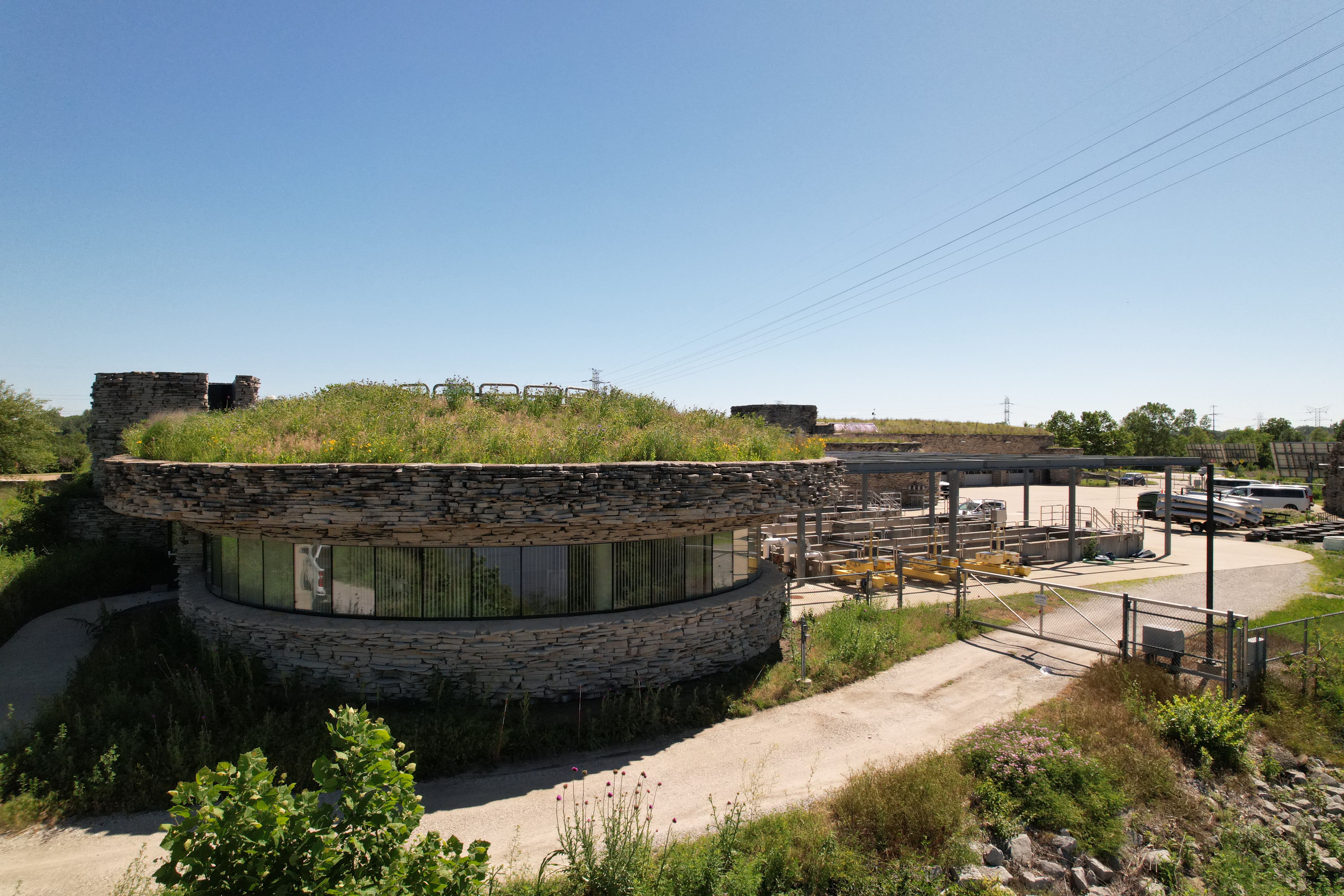 |
Jerry F. Costello Field StationOur facility in East Alton has become much more than a research field station in the 20+ years since NGRREC began. It is a place where all community members are welcome to come learn about the Mississippi River and their local ecosystem. Increasingly, the Jerry F. Costello Confluence Field Station has become a requested gathering space for community groups, corporations, municipalities, scientific organizations, and state and federal agencies. Our Riverview conference room provides a stunning overlook of the Mississippi River and the Melvin Price Lock and Dam. Visitors often see bald eagles, hawks, and waterfowl, along with the flow of barge and boat traffic up and down the river. They can also enjoy an elevated view from our green rooftop, which is handicap accessible. |
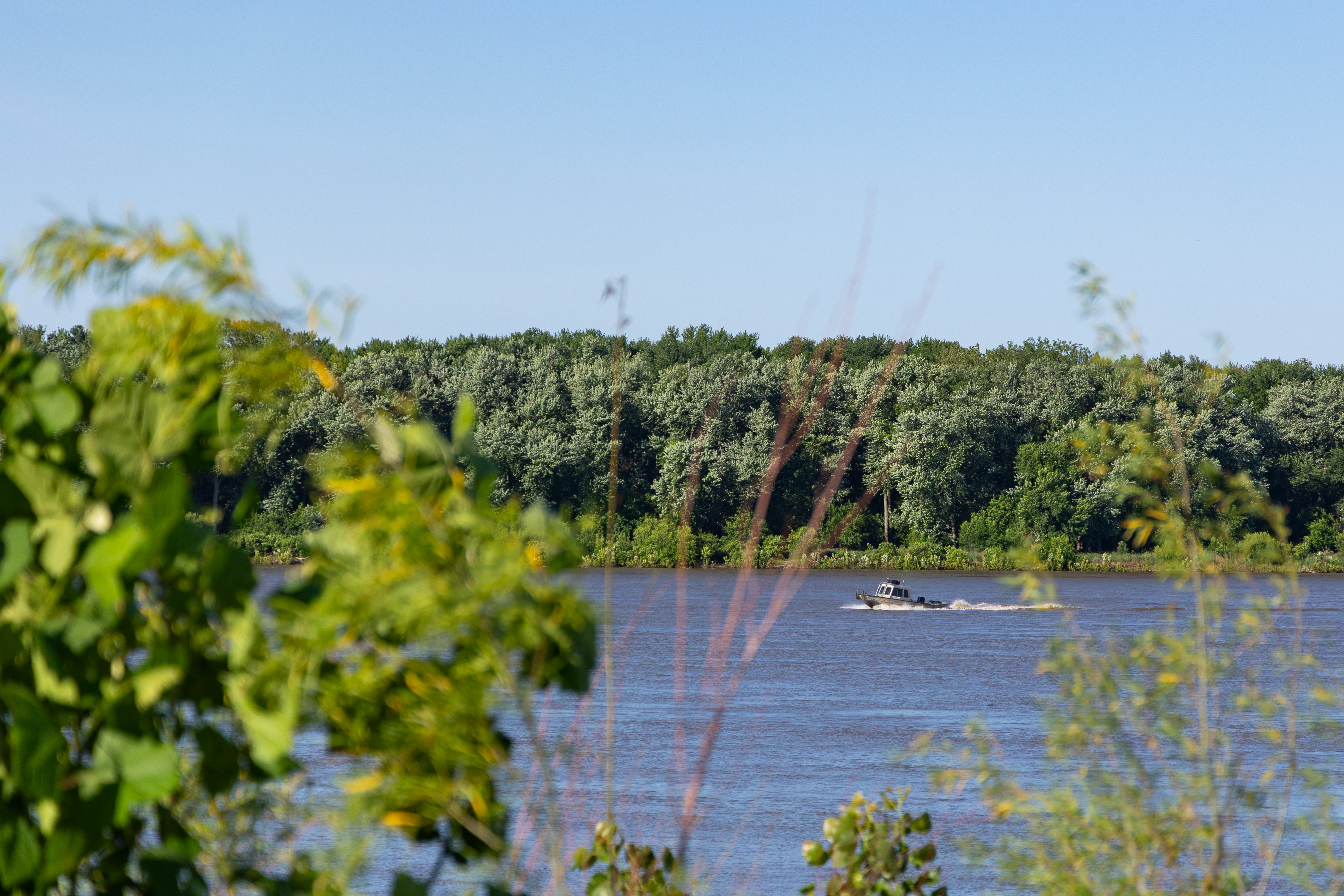 |
Field SitesNational Great Rivers utilizes three field sites for research; Maple Island, Coon Island and the Palisades. Maple and Coon islands are Mississippi River islands leased from the US Army Corps of Engineers while the Palisades is a river bluff property owned by the Lewis and Clark Community College Foundation, the Palisades is located just south of the confluence of the Mississippi and Illinois Rivers. |
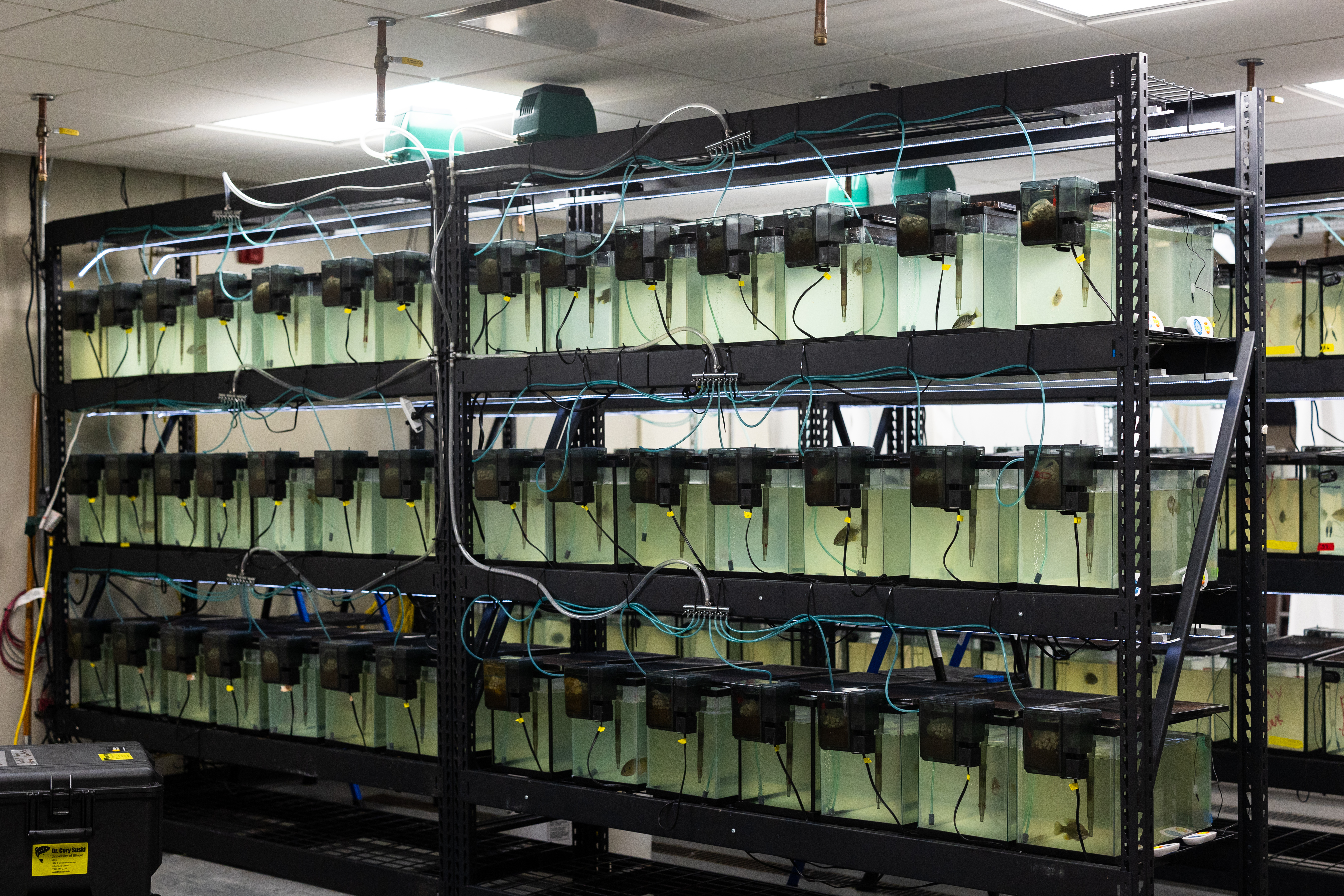 |
Aquatic Ecology LabThe Aquatic Ecology lab has an array of tanks and a water treatment system that enables our researchers to study aquatic organisms in a controlled environment that allows manipulation of various factors to measure their impact on the organisms being studied. Our researchers have used these to study microplastics, water quality and freshwater contaminants and how they impact fish species; future plans will assess other organisms, including macroinvertebrates and aquatic plants. |
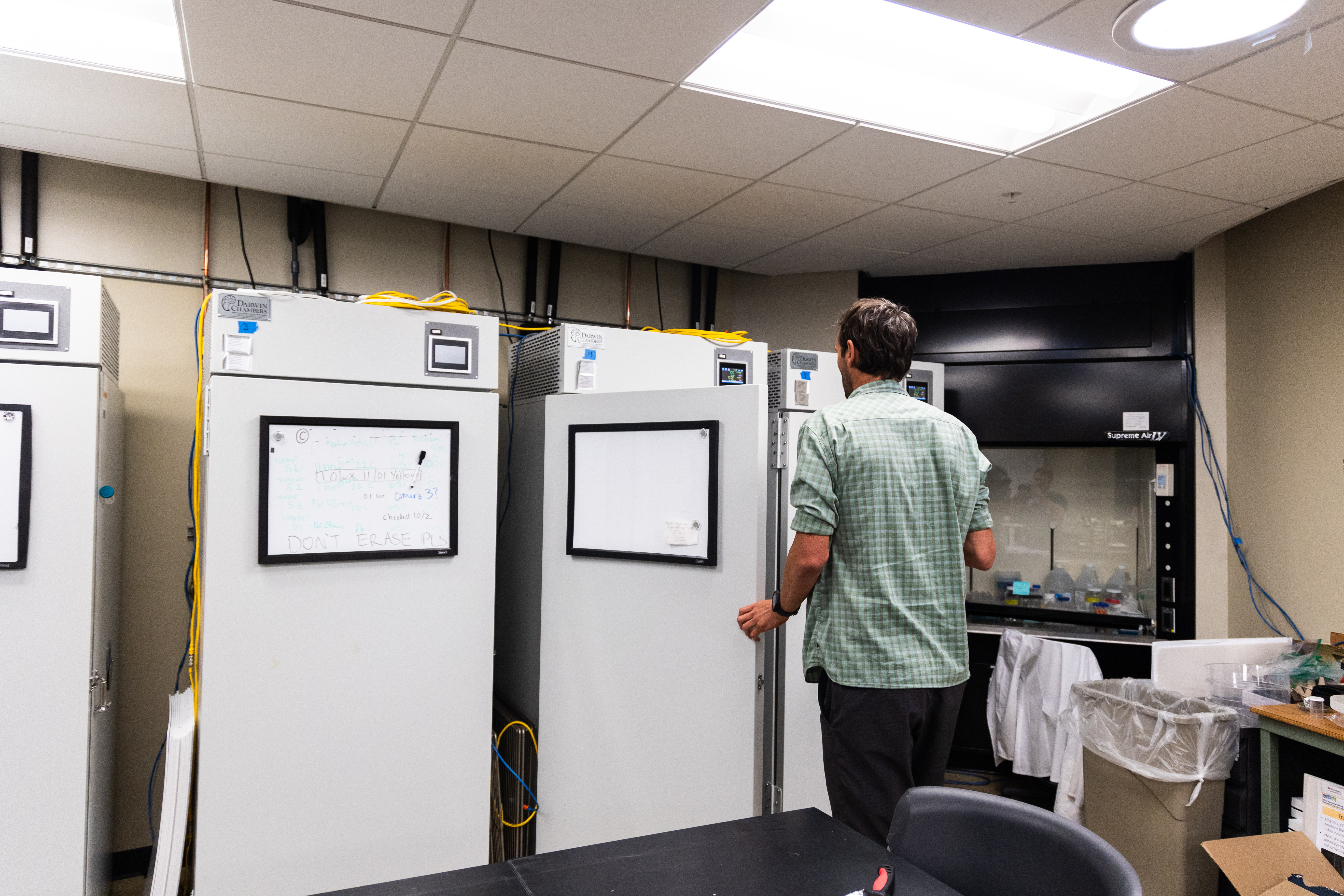 |
Darwin LabNational Great Rivers houses an array of controlled environment chambers, otherwise known as Darwin Chambers. These chambers allow our researchers to manipulate light, temperature and humidity as related to the growth and behavior of organisms. Controlled environment studies that are completed in lab settings are an important companion to field studies and help to deepen our understanding of natural systems and their food webs. |
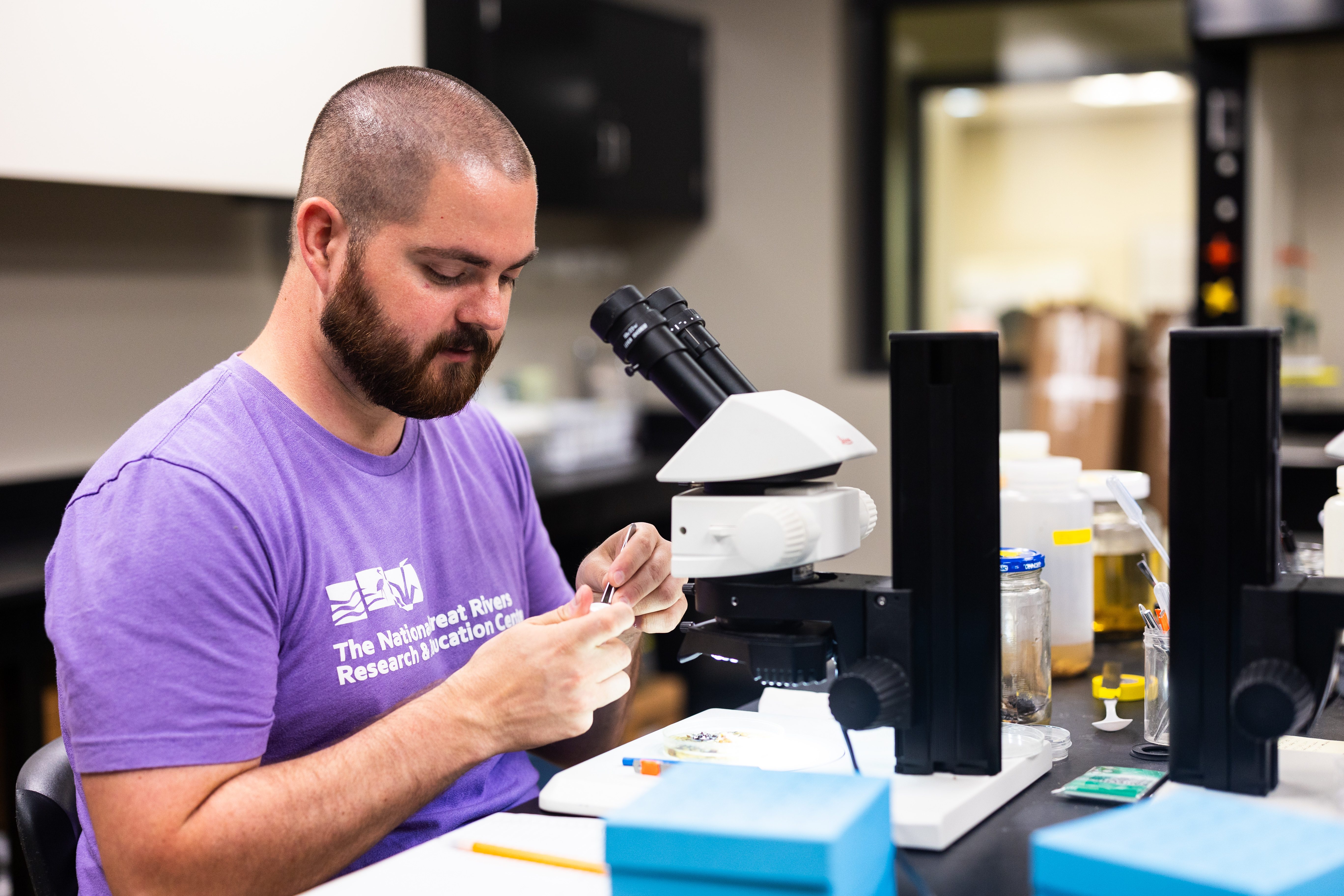 |
Macroinvertebrate LabNational Great Rivers funds and supports Illinois RiverWatch, a community science program that trains community members how to monitor the water quality of their freshwater streams by assessing the macroinvertebrate community present in the water. In addition to the data collected by community scientists, our researchers also study how macroinvertebrates are affected by freshwater contaminants like road salt. Another area of research involves monitoring freshwater mussel populations, with a current focus on the Sangamon River in Illinois. |
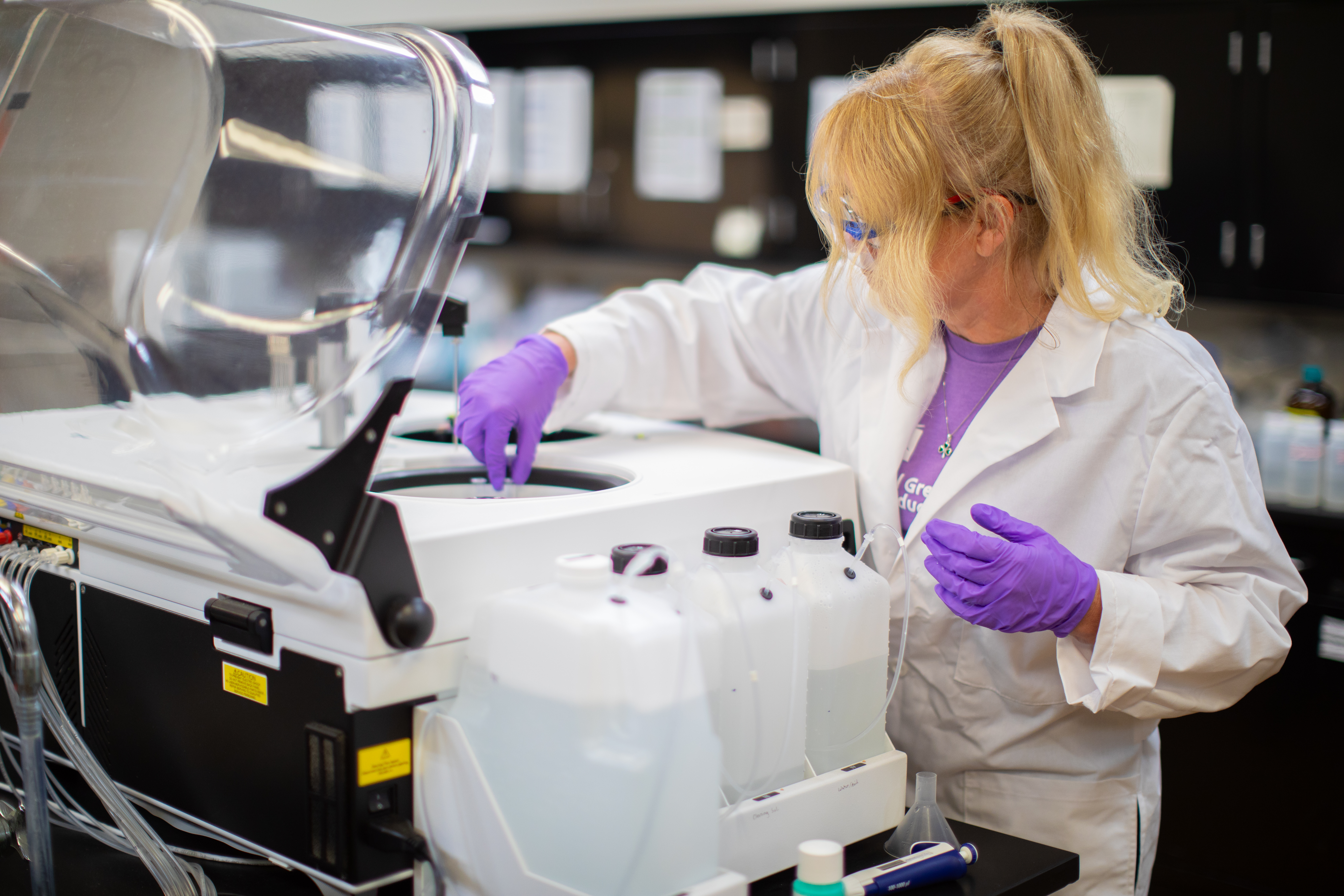 |
Environmental Chemistry LabThe Environmental Chemistry Lab at National Great Rivers specializes in analyses of water, sediment, soil, and plant samples for various research projects. Our primary focus lies in understanding nutrient cycling dynamics and the impacts of land management practices and climate change on water quality and aquatic ecosystems. Researchers are currently engaged in continuously monitoring nutrient concentrations in rivers, streams, and reservoirs in watersheds impacted by intensive agriculture, allowing them to assess changes in nutrient cycling dynamics. |
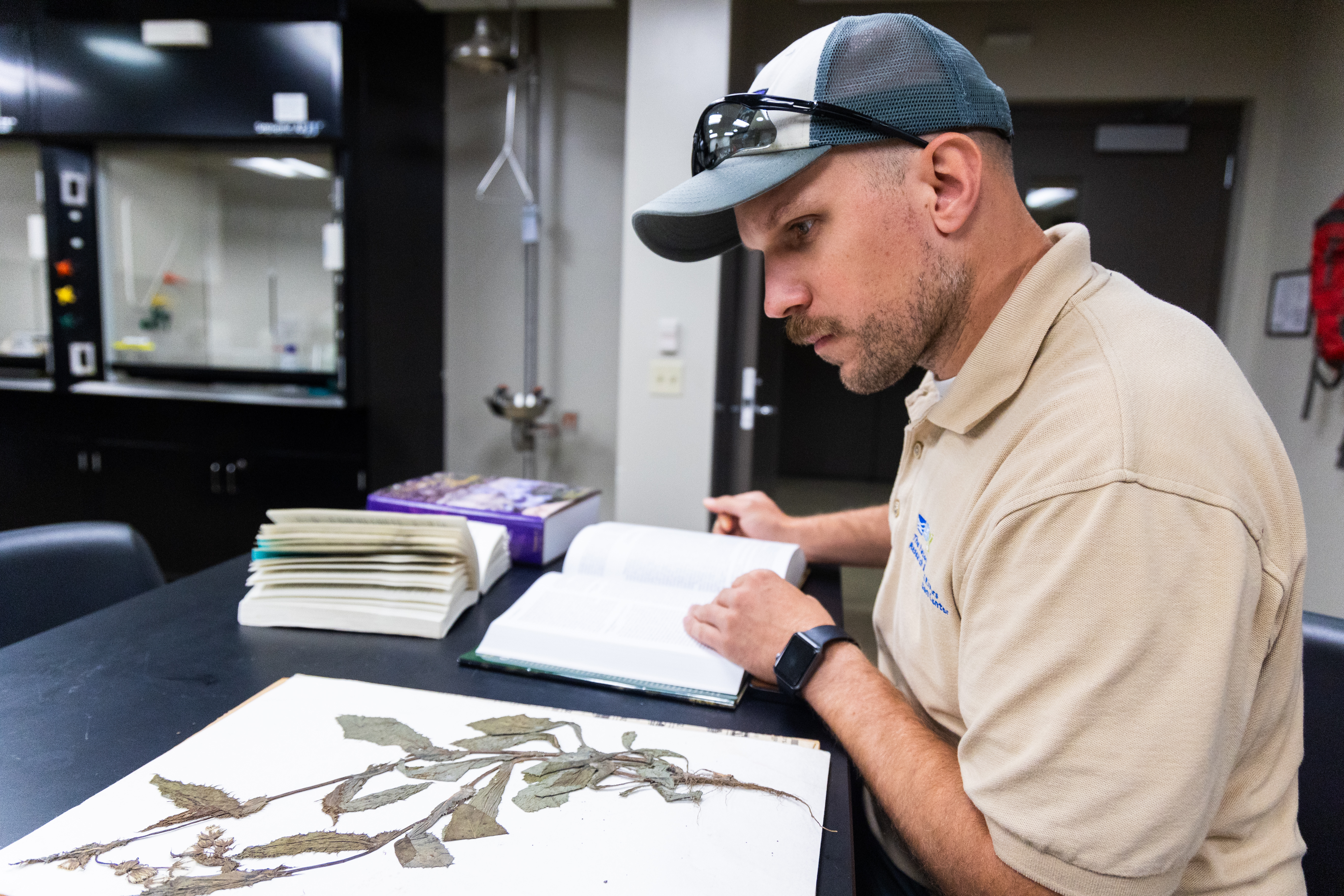 |
Terrestrial Ecology LabThe Terrestrial Ecology lab provides space primarily related to the identification of plant species and the study of plant communities; it is also home to the National Great Rivers herbarium. National Great Rivers has partnered with the US Army Corps of Engineers for over two decades to assess and monitor floodplain forests; our researchers work in the floodplain and wetland communities associated with great rivers and their watersheds. |
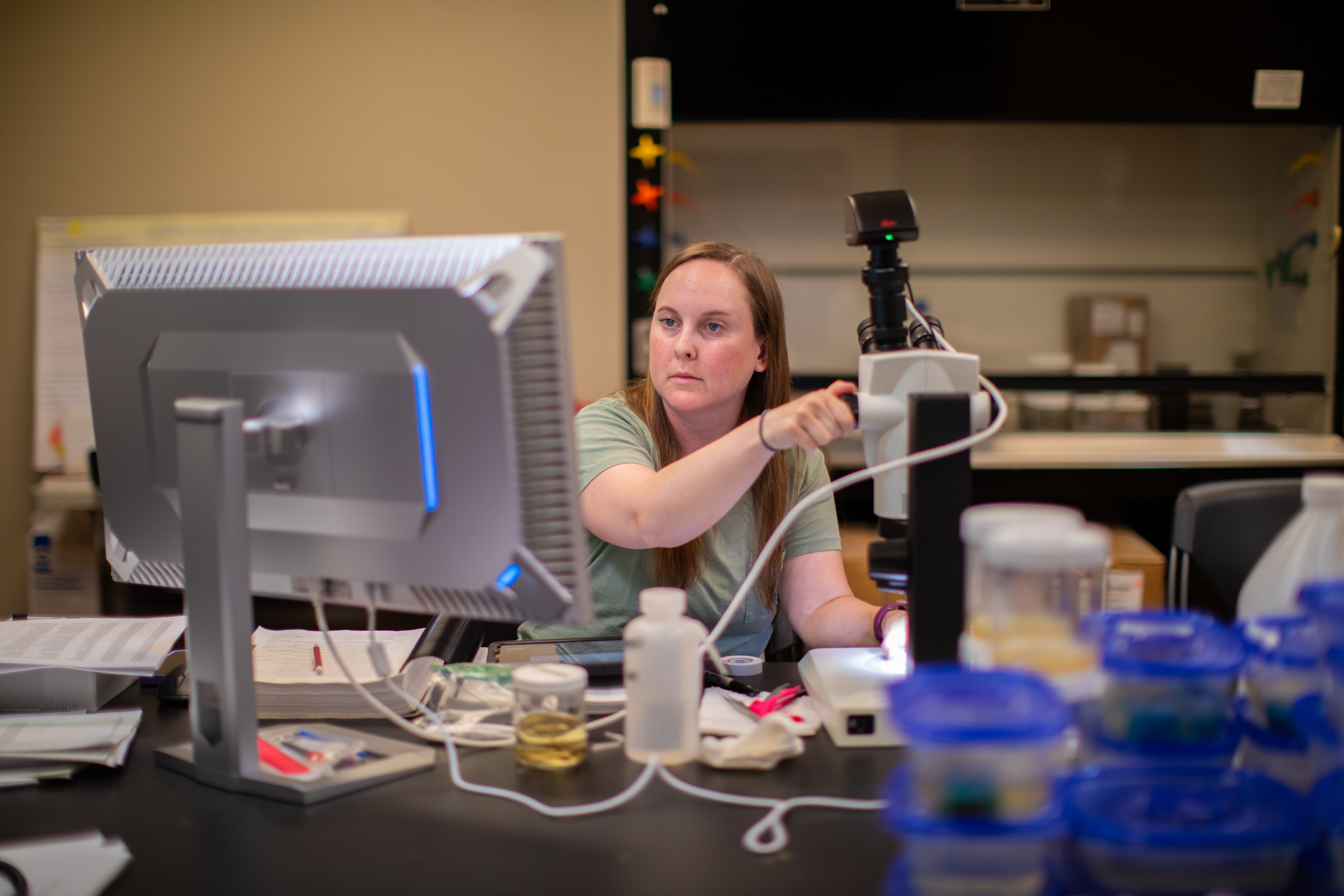 |
Wildlife Ecology LabThe Wildlife Ecology lab's primary goal is to conduct research that answers important questions related to the conservation and management of lower vertebrates and the wetlands they depend on. The research from this lab bridges multiple disciplines and studies the effects of habitat alteration, habitat degradation, and global climate change on amphibian populations. In addition, researchers in the lab are studying populations of Odonata, the group that includes dragonflies and damselflies. |